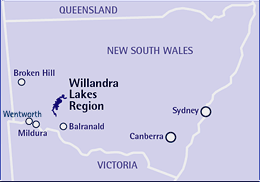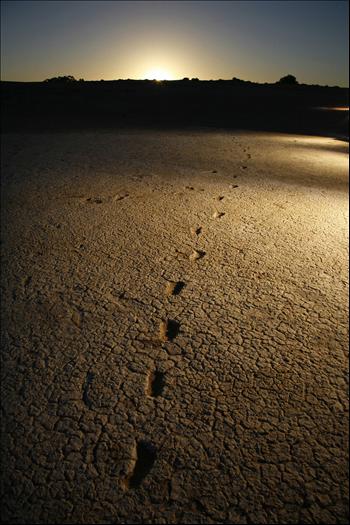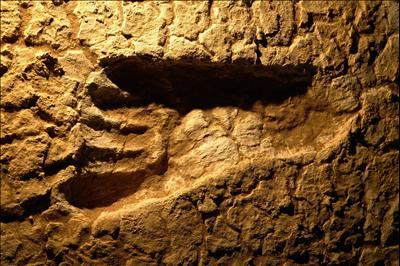Willandra Lakes World Heritage Site

Willandra Lakes is situated in the Murray Basin area of far south-western New South Wales. The area has been World Heritage Listed since 1981 for both outstanding natural and cultural universal values. Its natural values include outstanding evidence of major stages in the earth’s evolution and particularly exceptional examples of ongoing geological processes. Culturally, the area bares testament to a past civilisation.
The lakes of Willandra cover an area of roughly 2,400 square kilometres and are comprised of dried saline lake beds and plains of salt bush vegetation. The area sits in the Mungo National Park and is visited by tourists throughout the year.
It is believed that civilisation has been in the vicinity of the Willandra Lakes Regional for at least 50,000 years. To the delight of archaeologists in 1968, the remains of “Mungo Lady” were found in the dunes of Lake Mungo. It is believed that the site where Mungo Lady was found was a ritual cremation site and probably the oldest to be found anywhere in the world.
In 1974, “Mungo Man” was found nearby. Mungo Man was found as a complete skeleton and was believed to be at least 40,000 years old. This incredible discovery has caused a great deal of investigation by archaeologists to find further evidence of activity in the area.
One of the most incredible finds recently has been the largest collection of human footprints. These were found 2003, and the collection comprised 460 fossilised footprints believed to be belonging to children, teenagers and adults and are believed to be at least 23,000 years old. Apparently the clay contained calcium carbonate and it hardened like concrete after it had been walked on, and a layer of clay and sand protected the prints of erosion from the weather.
It is obvious that the Mungo people camped in the region especially around the lakesides, and so it is believed that animals and plants were in abundance at the time.
There have been many remains of animals found in the vicinity of the Willandra Lakes area. Over 55 species have been classified and of these 40 are no longer found in the region and 11 are unfortunately extinct.
There are 22 species of mammals to be found in the Wallandra Lakes district, and interestingly bats are the most commonly found mammals. There are at least 40 species of reptiles and amphibians to be known to inhabit this wonderful world heritage listed area of New South Wales.

Related Articles
Editor's Picks Articles
Top Ten Articles
Previous Features
Site Map
Content copyright © 2023 by Judie Bellingham. All rights reserved.
This content was written by Judie Bellingham. If you wish to use this content in any manner, you need written permission. Contact Judie Bellingham for details.






